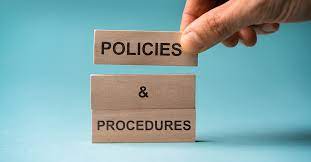In the intricate world of dental healthcare, maintaining compliance isn't just about following regulations—it's about integrating them into the very fabric of your daily operations. To ensure that your dental practice stays aligned with Medicaid and other regulatory requirements, it’s essential to have well-drafted compliance policies and procedures. But the real challenge lies in implementing these policies effectively. Here’s a guide to help dentists, dental hygienists, office managers, and team members turn written compliance policies into consistent action.
Distribute and Educate: Training for Team-Wide Compliance
The foundation of successful policy implementation is thorough distribution and education. Every member of your dental team should have access to the written compliance policies and procedures. But access alone isn't enough. Regular, in-depth training sessions are crucial. These sessions should walk team members through each policy and procedure, ensuring understanding and the ability to put them into practice.
Key Takeaways:
- Make sure all staff members have personal copies of compliance documents.
- Conduct comprehensive training sessions, with a focus on real-life scenarios.
- Implement a sign-off process to confirm that each team member has read and understood the policies.
Integrate into Daily Operations: Making Compliance Second Nature
Integration of compliance into daily workflows is pivotal. Compliance should be as routine as any other daily task. To achieve this, embed compliance checkpoints throughout the workday. For instance, begin morning huddles by reviewing a compliance tip of the day, or incorporate a quick compliance check before any dental procedure.
Key Takeaways:
- Identify key points in the daily workflow where compliance checks can be performed easily.
- Develop a simple compliance checklist for different roles within the practice.
- Reward compliance as part of the practice’s culture to encourage habitual adherence.
Leverage Technology: Automation for Efficient Compliance
Advancements in dental practice management software provide powerful tools for automating many aspects of the compliance process. From patient eligibility checks to claim submissions, these technologies can streamline operations and reduce the risk of human error. By leveraging such tools, your practice can not only increase efficiency but also maintain a higher standard of compliance.
Key Takeaways:
- Invest in dental practice management software that offers compliance-related features.
- Train your team on how to use the software effectively to ensure maximum benefit.
- Keep abreast of updates and new technologies to continuously improve your compliance processes.
Conclusion:
Implementing comprehensive compliance policies and procedures is a dynamic process that requires ongoing effort. By educating your team, integrating compliance into daily operations, and leveraging technology, your dental practice can enhance efficiency, reduce errors, and create a culture that values compliance. These strategies don’t just safeguard your practice against regulatory issues—they also contribute to providing superior patient care.
Remember, an ounce of prevention is worth a pound of cure, especially when it comes to compliance in the fast-evolving dental healthcare environment.


